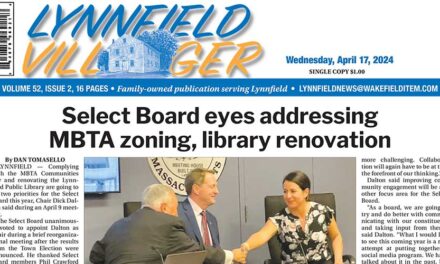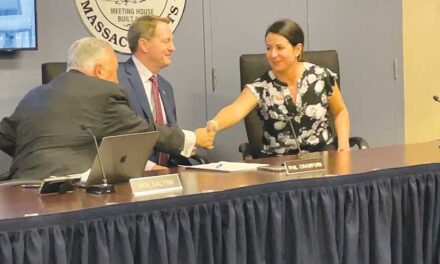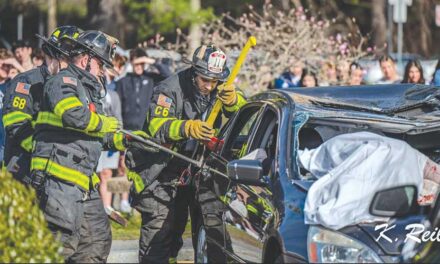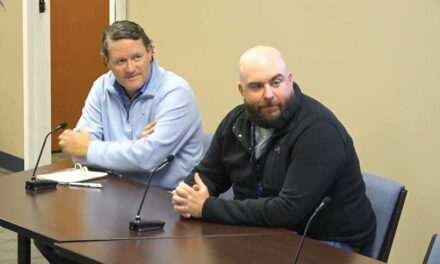Published October 16, 2019
By HELEN BREEN
LYNNFIELD — With Halloween around the corner, thousands flock to Salem to celebrate.
The real witchcraft madness of 1692, however, was spread throughout a larger area of the North Shore. The hysteria began in Salem Village, the old Tapleyville section of Danvers near the Liberty Tree Mall, when a group of “afflicted girls” started to charge neighbors with casting spells. Among the victims was Lynnfield’s own Elizabeth Hart, who was sent to jail in Boston because the local lockups were filled.
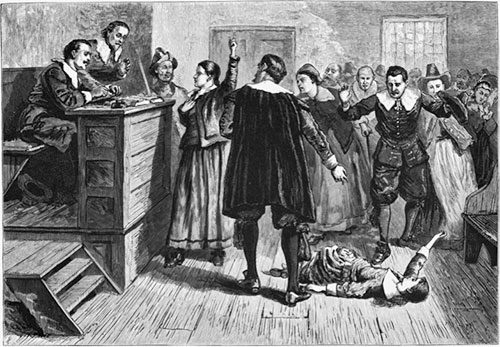
THIS ARTISTIC rendering of the 1692 Salem Witch Trials depicts a scene in which a young “afflicted” girl makes accusations against her neighbor, just as Elizabeth Hart of Lynnfield was accused by Mary Wolcott and others. (Courtesy Photo)
Accusations and Imprisonment
According to the family genealogy, Isaac Hart had bought 500 acres in “North Lynnfield” in 1673 near what is now the intersection of Main and Lowell Streets. Elizabeth Hart, Isaac’s elderly wife, was accused by Mary Wolcott:
“… I say an apparition of Goody (Mrs. Hart) who hurt me much by pinching and choking of me and urged me grievously to set my hand to her book, and several other times she tormented me, ready to tear my body to pieces.”
Of course, none of this made sense, and later historians determined that many of the charges stemmed from old personal feuds and property disputes. Fortunately for Elizabeth, her son Thomas Hart’s moving petition to have his mother vindicated was so well phrased that she was released in December of that year. He pleaded that he “… never saw nor knew any evil or sinful practice wherein there was any show of impiety nor witchcraft by her … the petitioner’s mother has lived a sober and godly life.” These witchcraft documents survive in Essex County archives. Prisoners were later freed only after their family had paid “room and board” for their incarceration.
Other victims
Town historian Thomas Wellman’s “History of Town of Lynnfield,” written in 1895, recounts these events and mentions two other West Peabody neighbors who were less fortunate. The octogenarian Giles Cory was pressed to death with heavy stones because he would not answer “aye” or “nay” to his indictment, only whispering defiantly “More weight.”
The courageous John Proctor was also among the 19 victims who were hanged. Proctor’s son was married to Elizabeth Hart’s daughter. The homestead of his descendants still stands on Lowell Street not far from Brooksby Farm in West Peabody. Proctor was the hero of Arthur Miller’s 1950s play “The Crucible” that gives a dramatic account of the witchcraft madness.
Interestingly, Elizabeth Hart (nee Hutchinson) was the stepdaughter of Saugus founder Adam Hawkes, who had extensive descendants in Lynnfield. When Elizabeth’s mother died, Adam married a much younger bride, Sarah Hopper. Then when Adam died, Sarah married Samuel Wardwell of North Andover and had several children. Wardwell was accused of witchcraft and hanged with eight others on Sept. 22, 1692. The unfortunate Sarah, an heir to Hawkes’s extensive holdings, was accused but not executed.
How did the witch trials end?
The mania that swept Salem in 1692 ended as quickly as it began. Five victims were sentenced and hanged in July, five more in August and eight in September. In October, Increase Mather, president of Harvard, denounced the use of “spectral evidence” in the proceedings: that is, testimony based on dreams, visions, and ghostly apparitions. In October, Massachusetts Governor Phipps, whose wife was also being questioned, dissolved the court and began to release the prisoners.
The city of Salem, which now capitalizes on witchcraft legends and paraphernalia, disassociated itself with Salem Village after the trials ended. Salem Village became part of Danvers. In 1886, a large section of “South Danvers,” where John Proctor and Giles Cory lived, became the city of Peabody, named for its benefactor George Peabody.
Fortunately for the saintly Elizabeth Hart, she survived and lingered on at “Hart’s Corner” in Lynnfield, surrounded by her family until her death in 1700. At this time of year, it is appropriate for us to reflect on the Salem Witchcraft Trials some three and a quarter centuries ago that disrupted so many lives in Lynnfield and neighboring towns.
— Residents can send comments to helenbreen@comcast.net.

